After leaving Malua Bay on our road trip up to Queensland (September 2024), we drove to Bateman Bay to stop at Woolworths and then headed to two waterfalls that were on the way to our next accommodation in Moss Vale, where there are 13 more waterfalls. We didn’t visit them all because it hadn’t rained so some of them needed rain, otherwise they were just a trickle of water or no water at all.
Our first waterfall was Granite Falls in Morton National Park which is on a dirt road that is well maintained with not many pot holes. The walk was only a 100 metre flat and easy walk until you get to the falls where there are 3 sets of steps to step down to the viewing platform. This waterfall is perfect to take kids to and people who don’t want to walk far to see waterfalls. The day we visited 30th September 2024 it was just a trickle of water because there hadn’t been any heavy rain recently. I would love to go back after lots of rain because it is a big waterfall and see it with more water flowing.
Exploring Granite Falls: A Hidden Gem in Morton National Park
Tucked away in the lush wilderness of Morton National Park in New South Wales, Granite Falls is a breath taking natural attraction that offers visitors an immersive experience with nature. Known for its impressive cascading falls and tranquil surroundings, this hidden gem is perfect for anyone looking to escape the bustle and soak in the serenity of untouched landscapes. Here’s what makes Granite Falls an unforgettable destination.
Glimpse into the Past
This area was once home to extensive logging operations, focused on the harvest of timber from towering trees for use in railway sleepers, fence posts, and building materials. In the early days, loggers employed a technique called springboarding, where a board was inserted into horizontal slots cut into the trunk. This allowed tall trees to be cut above the butt-swell and any defective wood at the base.
At the Redhead Mill (Bendalong), loggers commonly used the portable Hagen saw—a large circular saw mounted on a long arm. This saw was designed to make lengthy cuts that made transporting the timber easier. Evidence of Hagen saw usage and springboard cuts can still be found here, offering a glimpse into the region’s logging history.
Today, the site of the former Hagen saw is slowly being reclaimed by the regenerating bushland.
Please note that cliffs are present in this area. For your safety and to preserve the natural environment, stay on designated paths and supervise children at all times.
Take a look at this property for your next getaway.
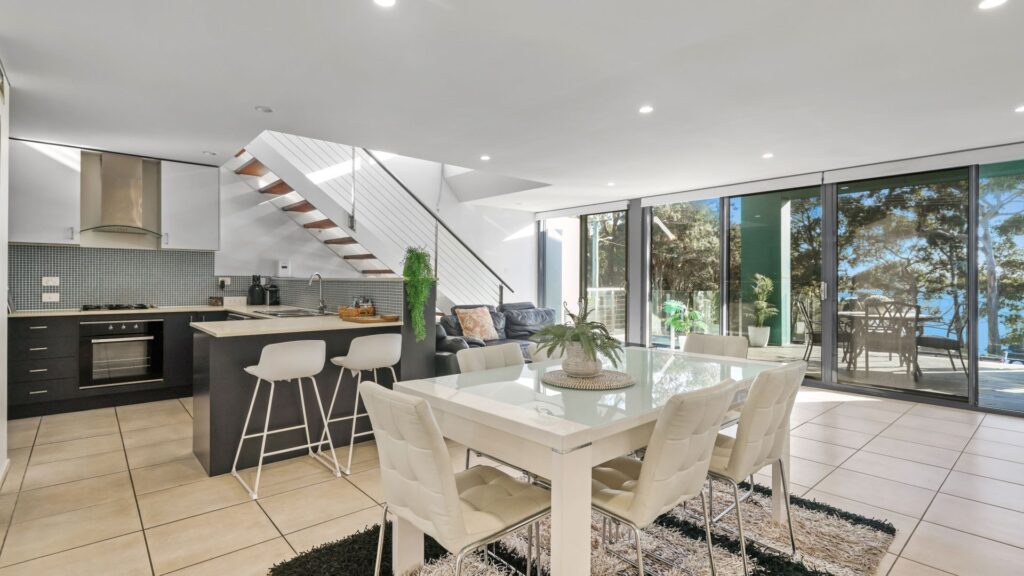
Discovering Granite Falls
The beauty of Granite Falls lies in its dramatic drop and the sense of isolation it provides. A short drive from the coastal town of Ulladulla, the falls are accessible via an easy walking track through Morton National Park’s pristine bushland. As you wander the track, you’ll notice a mix of dense eucalyptus trees and ferns, creating an atmosphere that’s both calming and full of vitality. Birdsong fills the air as you make your way to the lookout, offering an authentic bush experience.
At the start of the track there a couple of big steps that step down onto a bridge that has steel hand rails/fence that crosses a creek, the gravel path is nice and wide with no pot holes and is a short walk to the waterfall. There are steps that lead down onto the cantilever viewing platform with a seat in the middle that you can sit on and enjoy the waterfall and scenery. I was disappointed that there wasn’t more water flowing down but it hadn’t rained enough recently to have more water flowing over it. There are no facilities at this location. I think this waterfall would be better over winter time (June to August) to visit when it rains more.

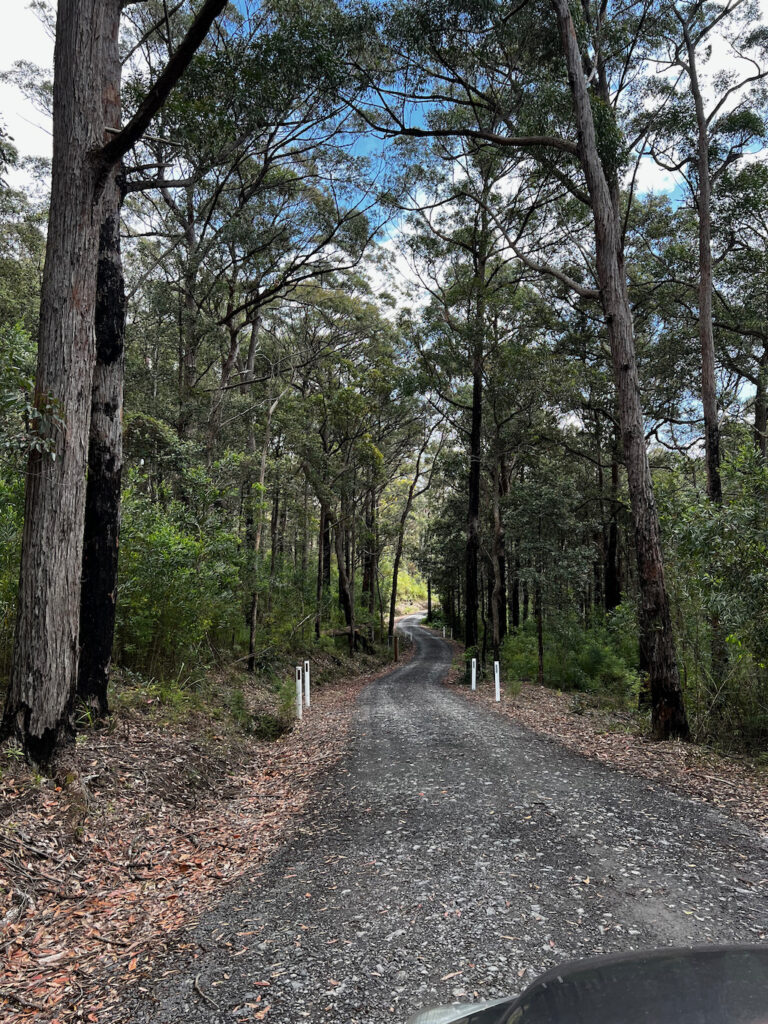
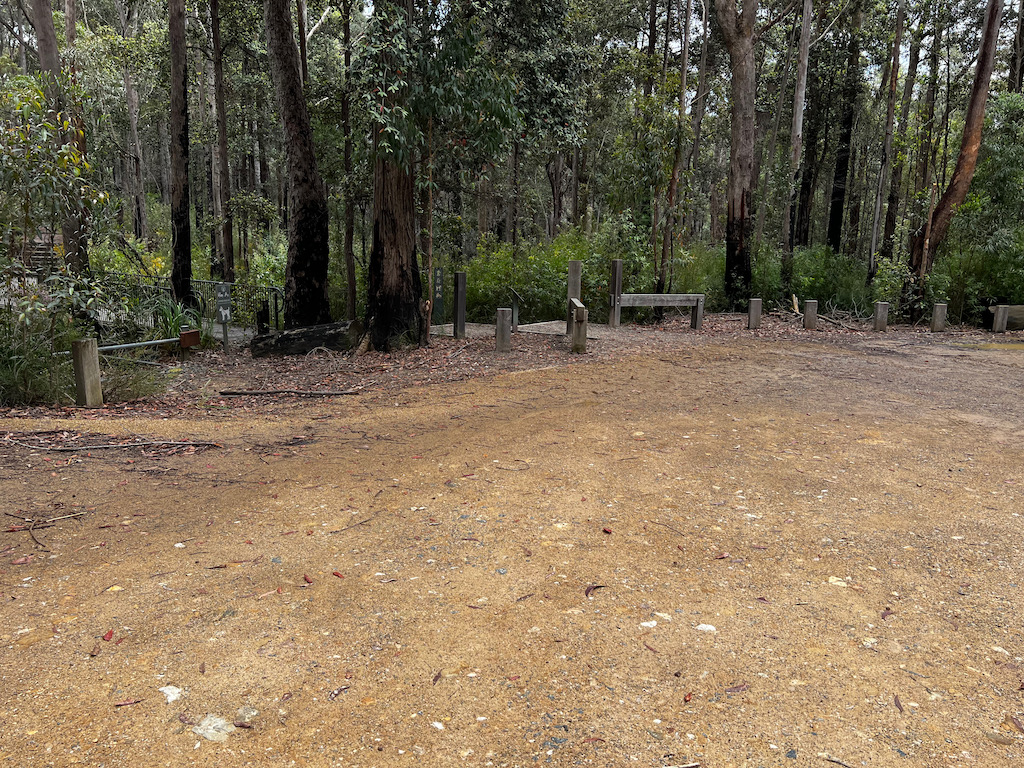

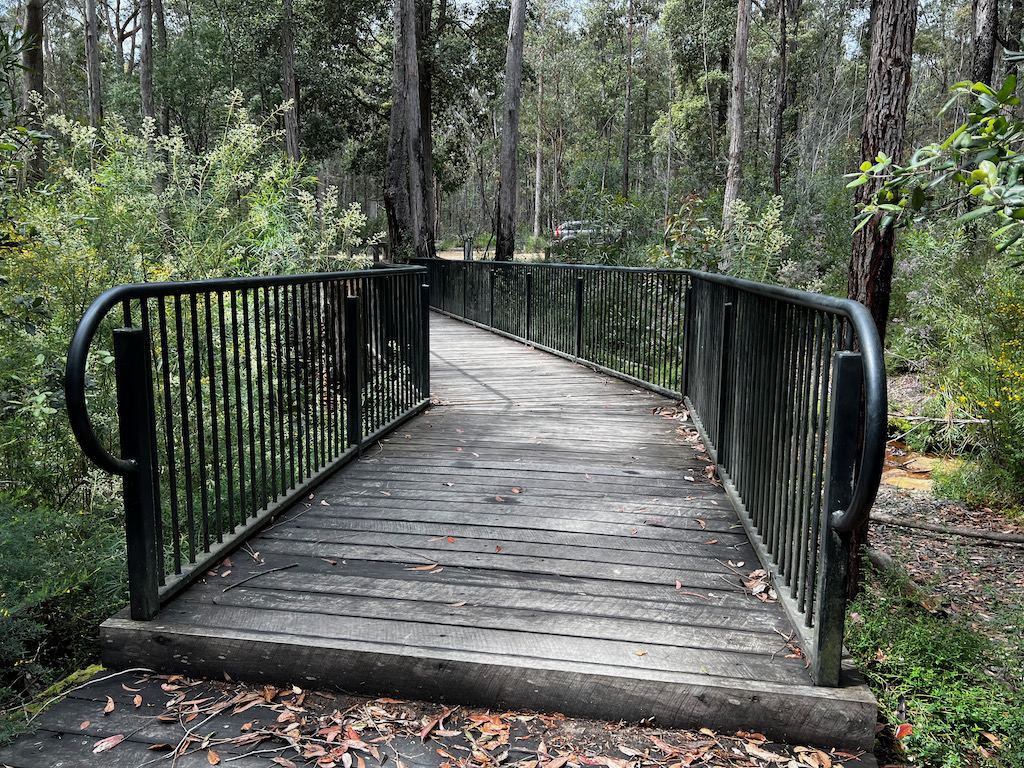
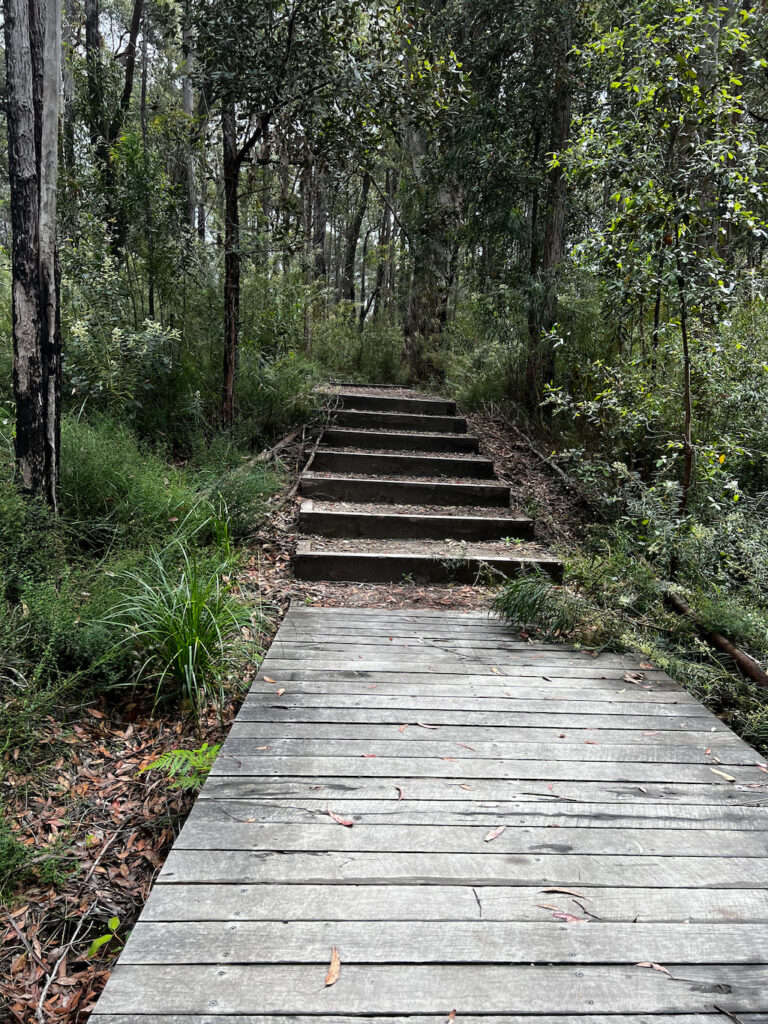


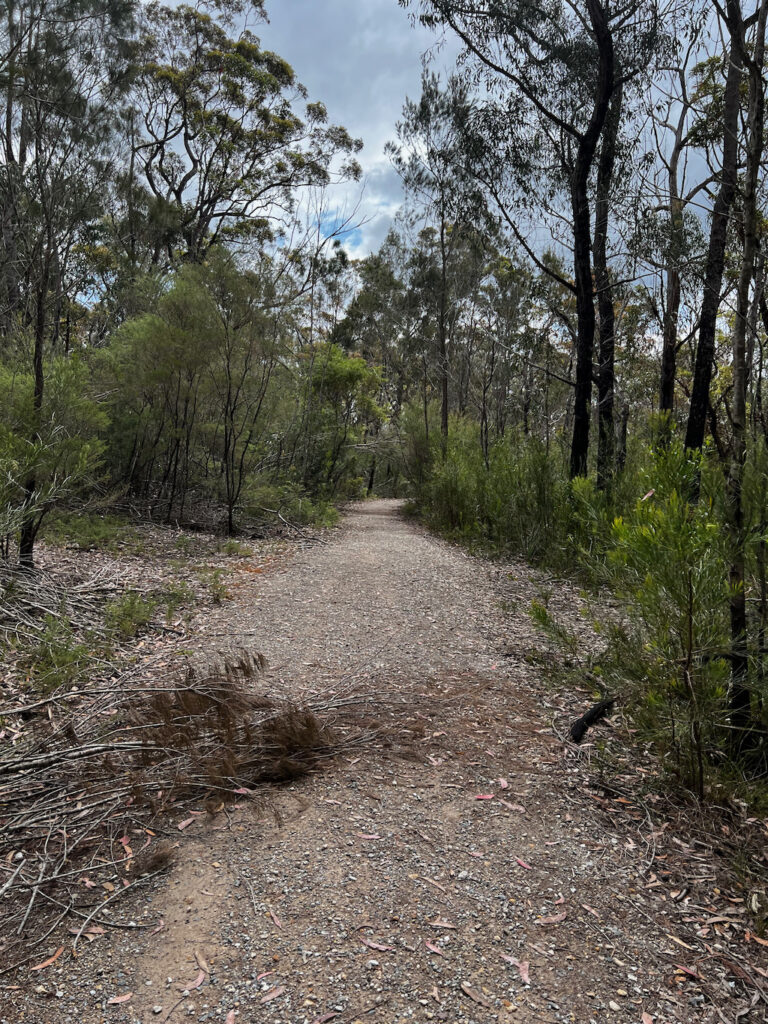
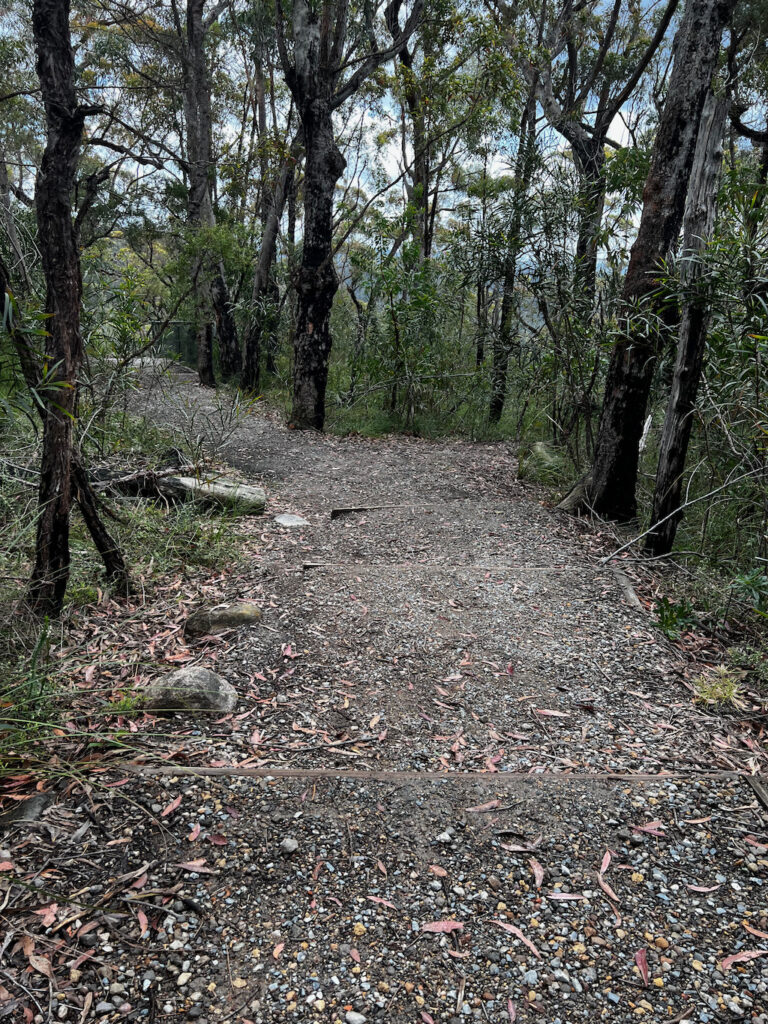

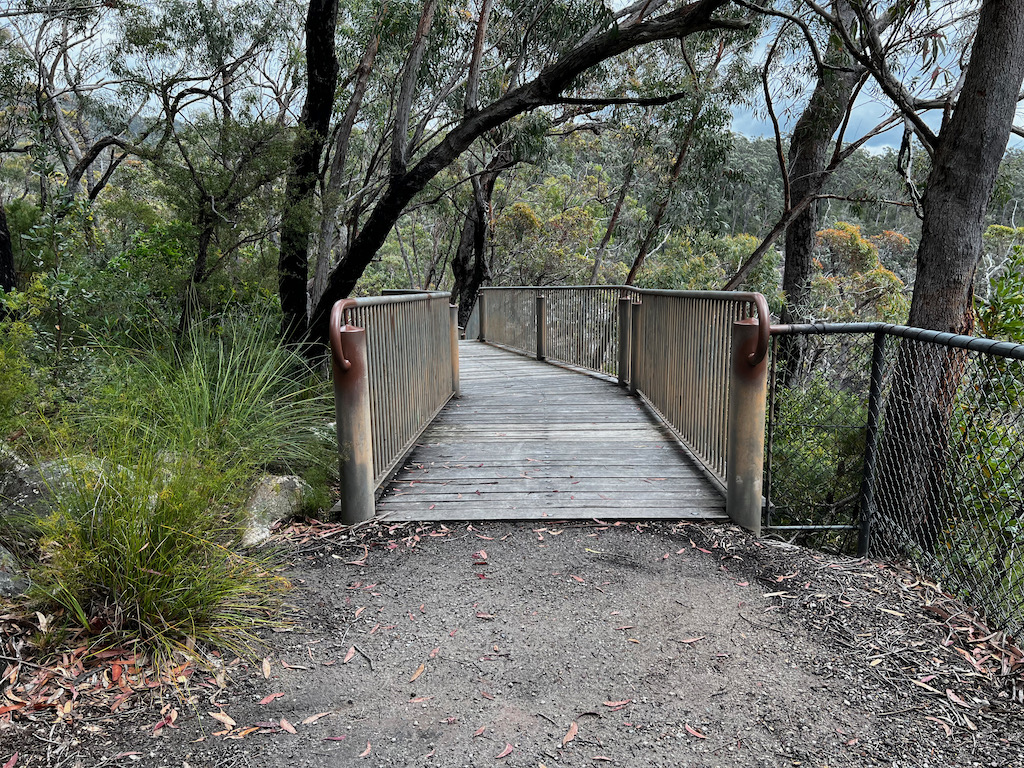
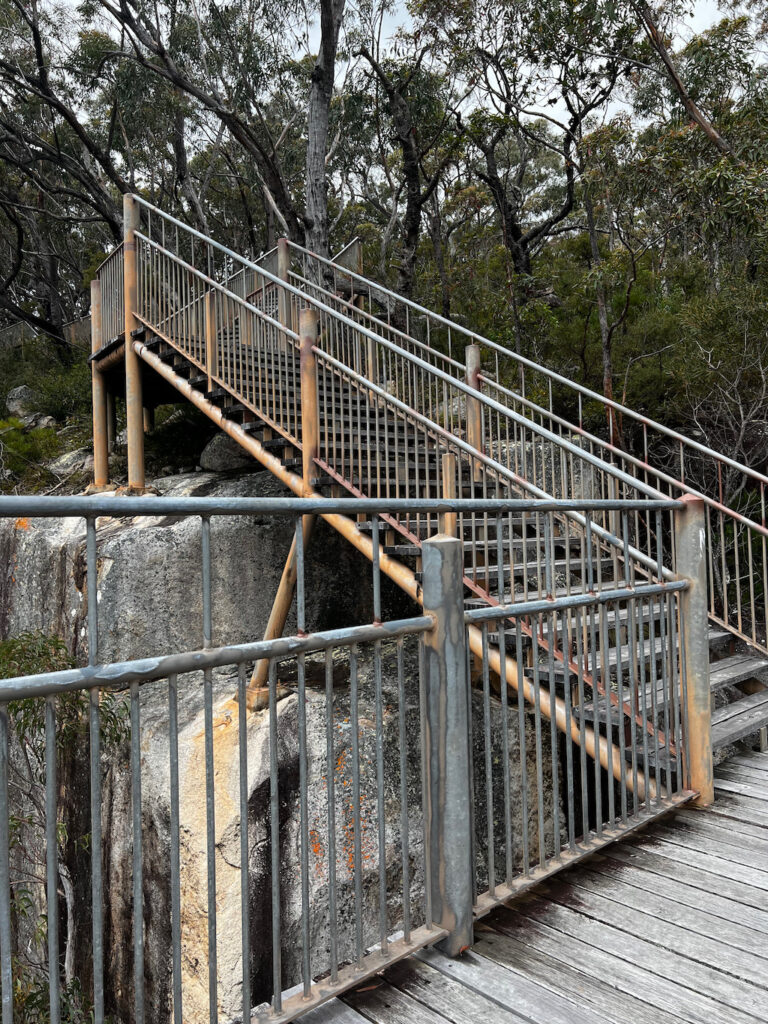
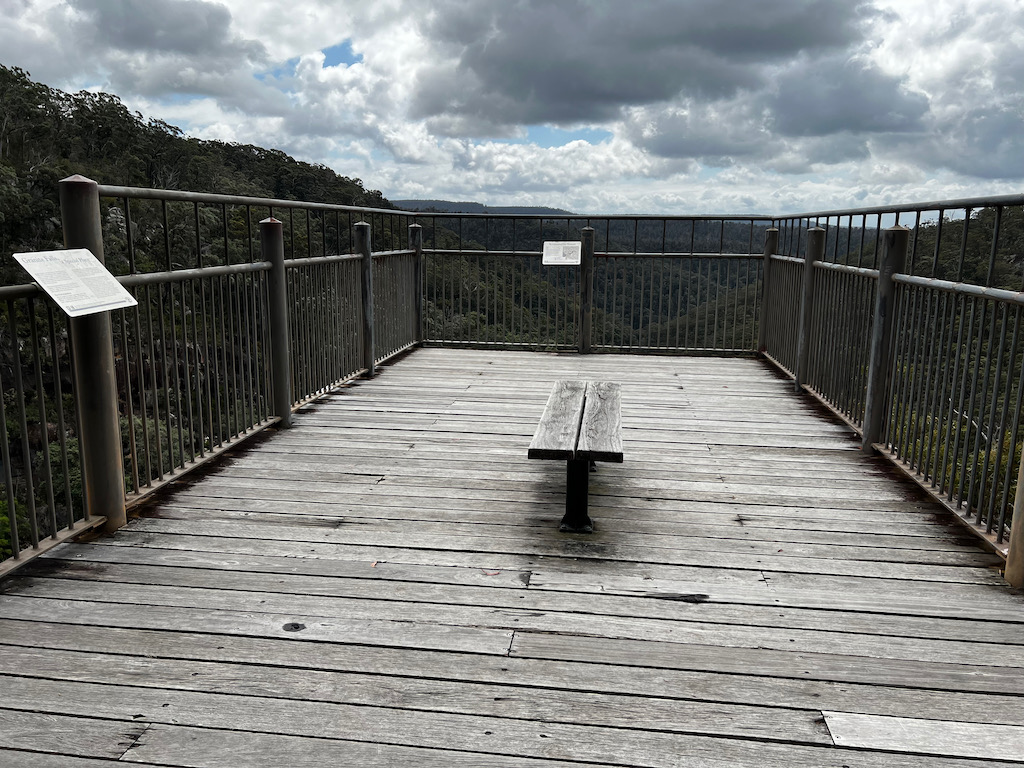
Explore this property for your next holiday.
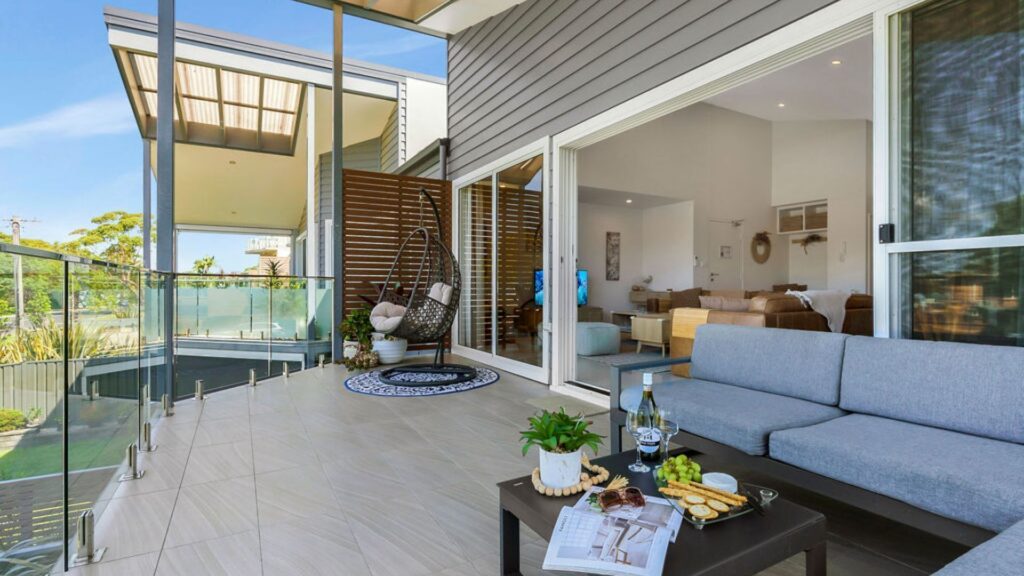
A Living Forest
The terrain here varies widely, from rugged heathlands and sclerophyll woodlands to shaded, moist rainforests. These diverse environments provide crucial habitats for a range of native animals, including eastern grey kangaroos, common wombats, various bird species, and several types of possums and gliders, including some that are threatened. Morton National Park also marks the southernmost range of the nocturnal, threatened broad-headed snake—a unique species that gives birth to live young.
In spring and early summer, native herbs, shrubs, and trees burst into bloom, filling the air with the rich fragrances of boronia and banksia. This area is also home to three of the five native species of flannel flower (Actinotus spp.) found in New South Wales
Beneath the Surface
The small depressions you see here are remnants of early 1900s tin mining activities, when prospectors searched for minerals in this area. Although only a modest amount of tin was extracted, the presence of granite—a rarity in this region—attracted miners, leading them to try their luck here before moving to richer deposits near Wandandian.
Tin was mined in its natural form as cassiterite, a compound of tin oxide. To expose the tin-rich rock, prospectors would light fires on open-cut ground, causing the rock to crack in layers, similar to an onion peel. Tin has been valued by humans for over 5,000 years, historically used to create bronze, pewter, and solder. Today, it is also used in electronics, food packaging, perfumes, and dental fillings.
The Lookout
A well-maintained boardwalk leads to a lookout platform, providing visitors with spectacular, unobstructed views of the falls as they tumble over ancient rock formations. The lookout is safely positioned at the edge of the escarpment, giving a stunning view of the deep valley below, where you can see the falls cascading down rugged granite cliffs. The contrast between the bright white water and the dark, weathered rock is striking, particularly after rainfall, when the falls are at their most powerful.
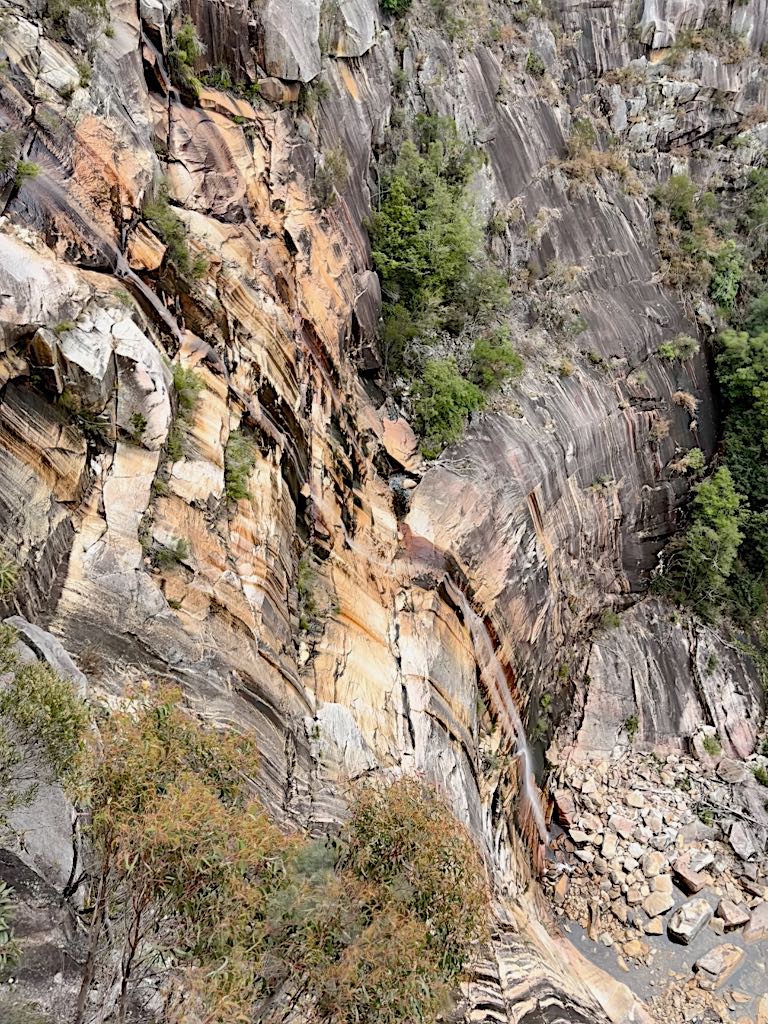

Sculpted by Nature
Granite Falls, standing 63 meters high, began its formation around 500 million years ago, when this area lay beneath an ancient sea. Over time, thick layers of Ordovician sediment settled on the seabed, later folding, twisting, and being uplifted above sea level. During the Devonian period, molten rock rose from deep within the Earth, cooling slowly beneath these sedimentary layers to form granite. As erosion wore away the overlying rock, the granite was eventually exposed.
Today, weathering and erosion continue to shape this striking geological feature—a granite island surrounded by newer Permian sandstones that trace the path of Wandandian Creek.
Granite itself is an igneous rock composed of four main minerals: quartz, feldspar, mica, and often hornblende.
Granite Falls
For Aboriginal people, natural places with distinct, contrasting features from their surroundings are often regarded as sacred. Access to such sites was traditionally limited, with only elders possessing the knowledge of how to safely approach and respect the powerful forces believed to inhabit these places. Those who ventured too close without understanding this knowledge could risk harm.
While there is limited archaeological evidence of artifacts or campsites directly in the area, nearby sites feature rock art, axe grooves, and ceremonial grounds, highlighting the cultural significance of the region.
Wouldn’t it be wonderful to stay here and enjoy this amazing view?
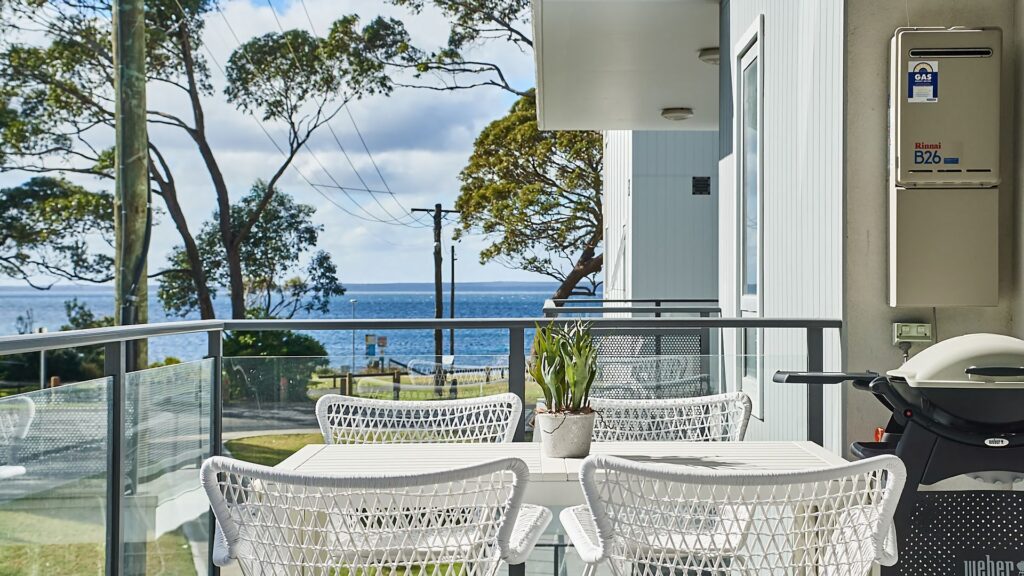
The First Inhabitants
The earliest inhabitants of the South Coast region were often identified by their language, such as Dharawal or Dhurga, or descriptive terms like Yuin (meaning “man”) or Murring (meaning “south coast person”). Various clans and family groups, such as the Wandandian (or Wanda Wandian), lived in the area. Individuals were often connected to the land through their ‘totem’ or ‘skin,’ which defined their roles, relationships, and responsibilities to the land.
Archaeological records indicate that Aboriginal people have lived in this area for at least 20,000 years, moving regularly between the coast and the inland reaches of the Shoalhaven River near Braidwood. These journeys were often for trade and ceremonies, facilitated by an extensive network of Aboriginal pathways that traversed ridges, passes, and rivers. Although early European explorers relied on these routes, they seldom credited the Aboriginal custodians who shared their knowledge. Today, many of these ancient routes form the basis of modern roads, fire trails, and walking tracks, preserving a deep cultural connection to the land that remains strong among Aboriginal communities.
What to Bring and Expect
For a comfortable trip, pack essentials like water, sunscreen, and a hat, as Morton National Park’s sun can be strong even in cooler months. Binoculars are a great addition for birdwatching, as the park is home to various native species, including vibrant parrots and elusive lyrebirds. The lookout is also the perfect spot to bring a camera, as the natural beauty of the falls and surrounding forest makes for unforgettable photography.
Nearby Attractions
While Granite Falls alone is worth the trip, Morton National Park has other attractions that are equally captivating. The Pigeon House Mountain Didthul hiking track offers adventurous travelers a challenging climb rewarded with panoramic views of the coastline. Other scenic areas within the park, like Little Forest Plateau, provide excellent picnic spots and more opportunities to experience the region’s diverse ecosystems.
Practical Information
Granite Falls is open year-round and is best visited during daylight hours. Entry to Morton National Park may require a small fee, which helps maintain the facilities and preserve the park’s natural beauty. The road to the falls is mostly unsealed but manageable for most vehicles. Be sure to check local conditions before you go, as heavy rains can impact road access.
Conclusion
Granite Falls is a unique and awe-inspiring destination for nature lovers, photographers, and families alike. With its powerful falls, scenic lookout, and proximity to other attractions in Morton National Park, it offers a rewarding experience that combines adventure with tranquility. Whether you’re stopping for a quick visit or planning a day trip to explore the park, Granite Falls will leave you with memories of one of Australia’s beautiful and lesser-known natural treasures.
Make the most of your holiday by cooking in this fantastic kitchen!

Top Attractions Near Granite Falls, Morton National Park
1. Pigeon House Mountain Didthul
A must-see for hikers, Pigeon House Mountain Didthul offers a challenging trail that leads to incredible panoramic views of the surrounding wilderness and coastline. The summit climb includes ladder sections, making it adventurous and well worth the effort.
2. Little Forest Plateau
Known for its picturesque picnic spots and scenic trails, Little Forest Plateau has sweeping views of Morton National Park and is a great spot for wildflower viewing in spring. It’s a peaceful location to enjoy a picnic with a spectacular backdrop.
3. The Castle
For seasoned hikers and rock climbers, The Castle offers one of Morton National Park’s most challenging trails. The steep hike leads to jaw-dropping views from the rocky summit, showcasing the rugged beauty of the Budawang Ranges.
4. Florence Head Lookout
Florence Head Lookout provides stunning views over the Clyde Valley and the cliffs of Morton National Park. It’s a less demanding hike with great vantage points, ideal for those wanting an easy-to-moderate trek.
5. Neriga Falls
Located in the deeper areas of Morton National Park, Neriga Falls is a hidden gem for waterfall enthusiasts. The area around the falls is great for short walks and picnics, offering a serene escape within the dense bushland.
6. Yadboro Flat
Yadboro Flat is a popular camping area near Morton National Park, ideal for overnight stays or day visitors. The flat is surrounded by dense forest and the Clyde River, perfect for swimming, fishing, and relaxing.
7. Budawang Wilderness Area
For those seeking an untouched and pristine environment, the Budawang Wilderness Area offers beautiful landscapes and challenging hikes. The region is ideal for bushwalking, birdwatching, and photography.
Each of these destinations adds a unique perspective to the Granite Falls area, showcasing the diversity and natural beauty of Morton National Park.
What a breathtaking view to enjoy while relaxing on the deck
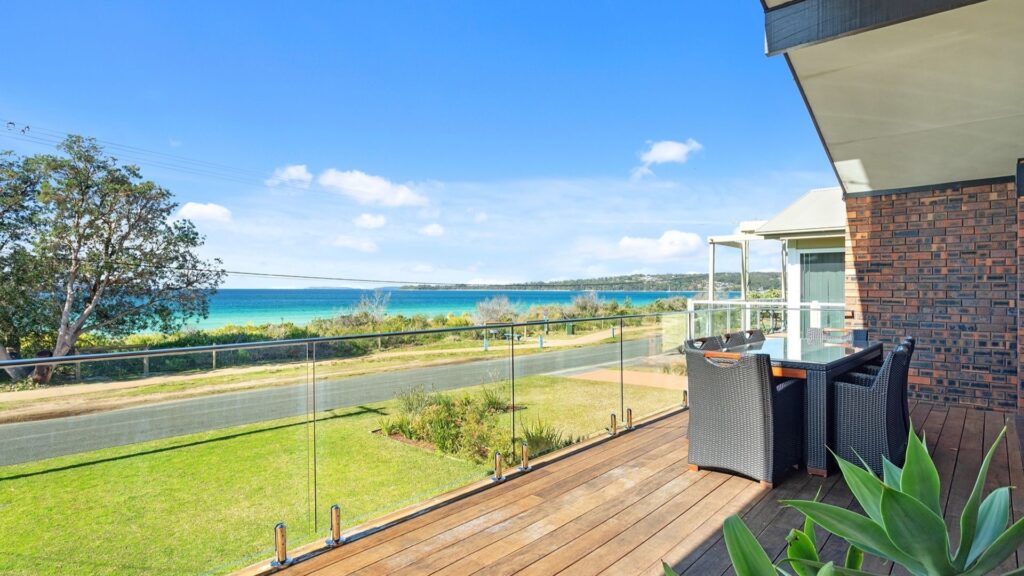
Towns Near Granite Falls: Gateway Communities to Morton National Park
- Milton – 20 km: A charming historic town with cafes, shops, and accommodations.
- Ulladulla – 25 km: A coastal town known for its harbor, beaches, and seafood dining.
- Nowra – 50 km: A larger town with a range of services, shopping, and access to the Shoalhaven River.
- Bawley Point – 35 km: A small beachside village perfect for relaxed coastal activities.
- Mollymook – 30 km: Known for its beautiful beaches, ideal for surfing and seaside relaxation.
These towns offer a variety of amenities, from dining and accommodations to scenic spots, making them ideal stops near Granite Falls and Morton National Park.
Tours and Activities:
These are my picks for tours and activities in the area, the links will take you directly to the booking site where I receive a small commission if you book the tour this does not alter the price as the commission comes out of the price from the booking site. I love travelling and providing information to help others maximize their vacations so by booking through my links you help support me to keep providing this information for free and without ads.
Half-Day Jervis Bay Sea Kayak Tour
View on Viator.com Half-Day Jervis Bay Sea Kayak Tour
Get up close and personal with the crystal clear waters, beautiful beaches, and amazing sea life in Booderee National Park on this guided Jervis Bay sea kayaking tour from Huskisson. Leaving in the morning, you’ll cruise through the glassy waters along the coastline to Bowen Island and Murrays Beach, before swinging by a secluded beach fringed with lush rainforest and feasting on freshly baked cakes, tropical fruit, and hot drinks.
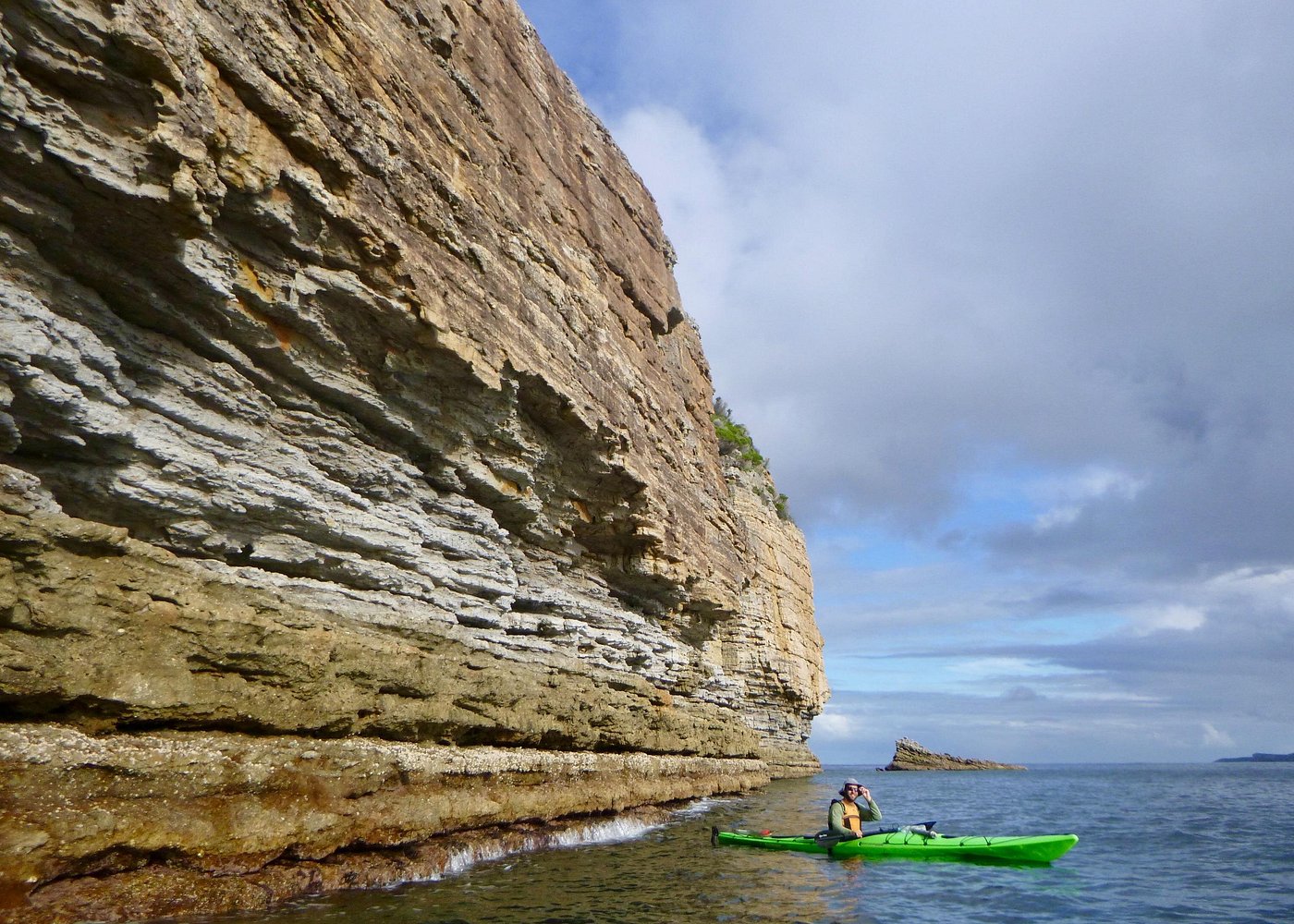
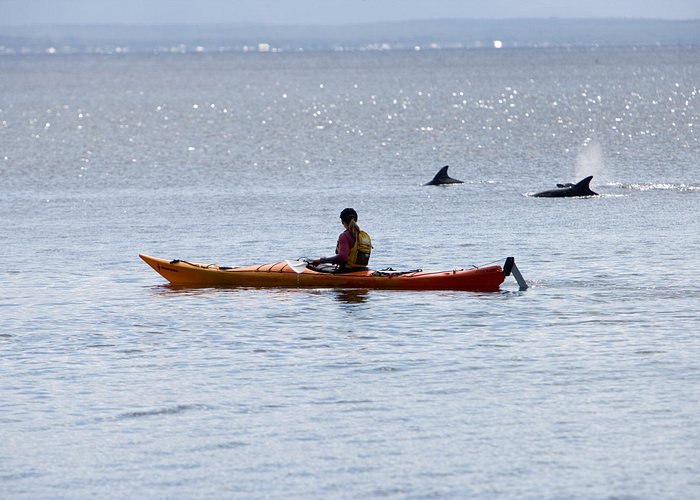
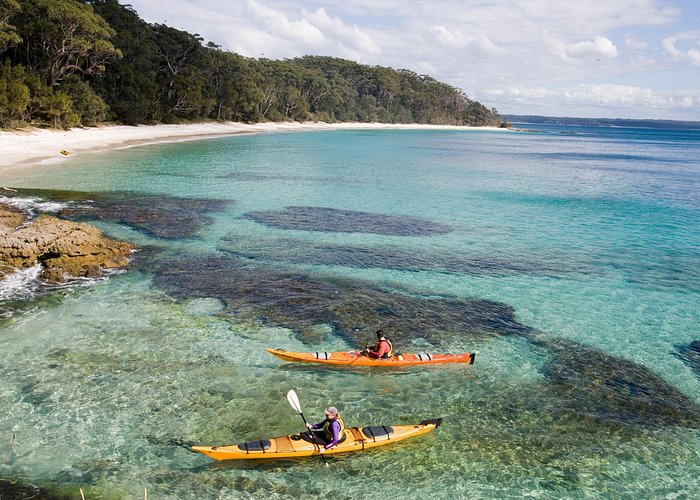
Tandem Skydive Shellharbour Beach 15,000ft
View on Viator.com Tandem Skydive Shellharbour Beach 15,000ft
Skydive from up to 15,000ft – Shellharbour, Sydney south coast
Enjoy a 60 second freefall and adrenaline rush
Skydive over crystal clear coral waters and a enjoy a Beachside Landing.
Stunning coastal views of Bass Point, Bushrangers Bay, Kiama and more!
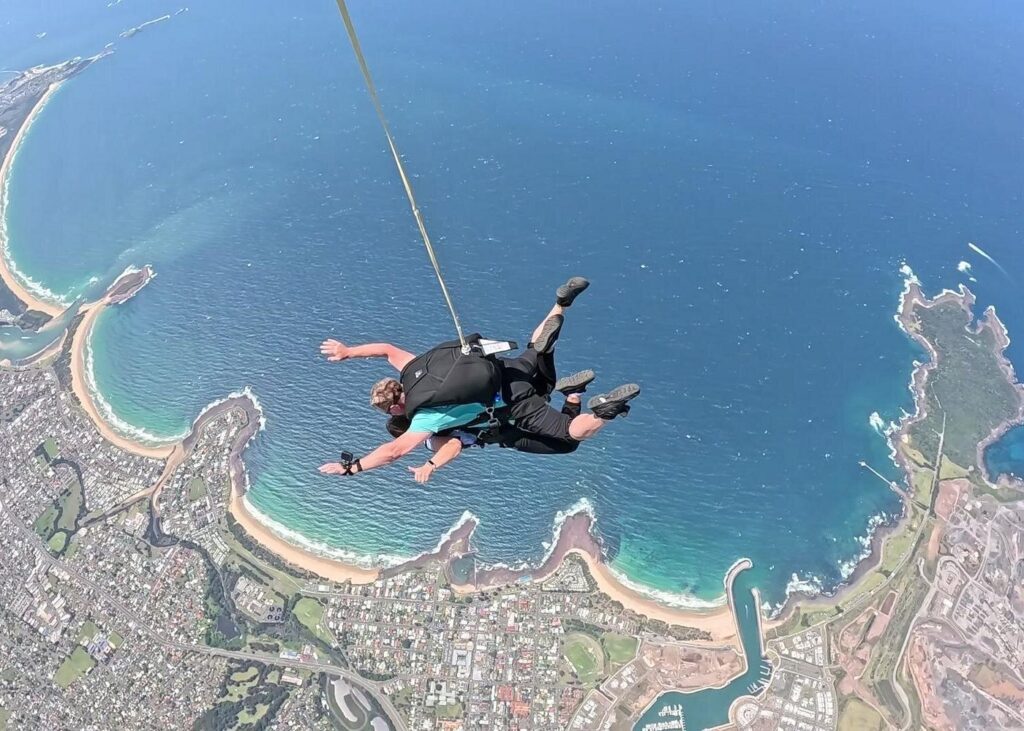
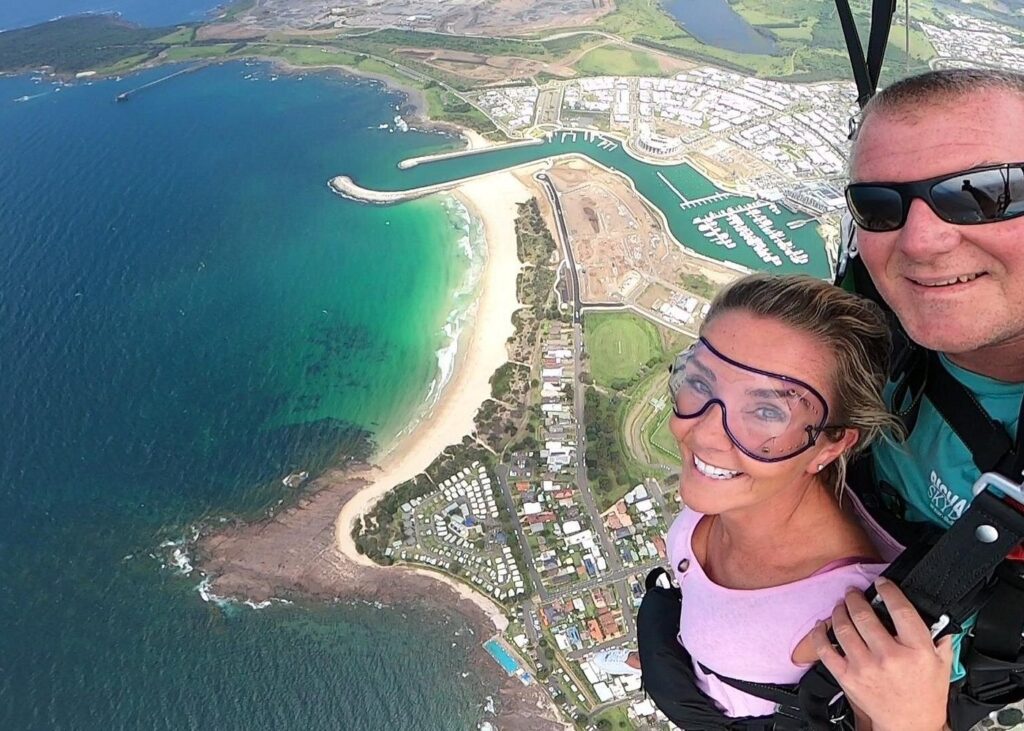
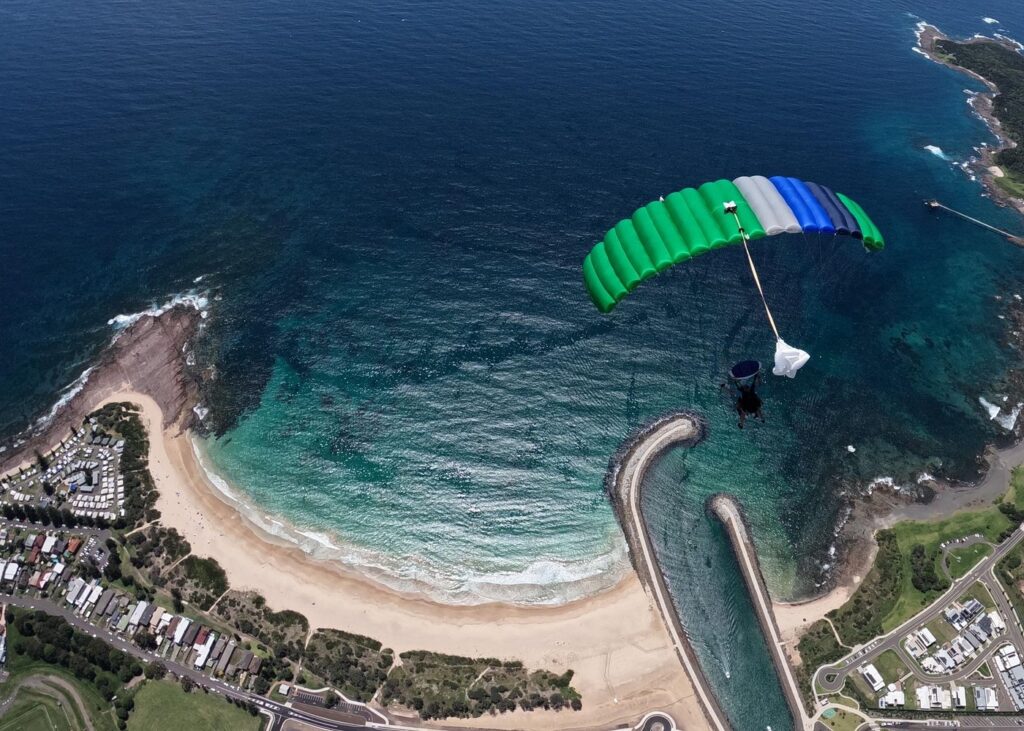
Private Stand Up Paddleboard Group Hire
View on Viator.com Private Stand Up Paddleboard Group Hire
The best way to explore the South Coast and Jervis Bay around Culburra Beach is on the back of a SUP! This unique and gentle watersport activity gives you a fresh perspective of our beautiful coastal peninsula, including the serene Jervis Bay coves of Currarong and Callala, the oyster farmlands and fishing precinct of Curleys Bay and Greenwell Point, and the meandering Crookhaven River. There are many opportunities to tuck in out of the wind, or beat the crowds with an early morning paddle. Get some friends together and make a day of exploring the wildly picturesque South Coast with this unforgettable Stand-Up Paddling experience.
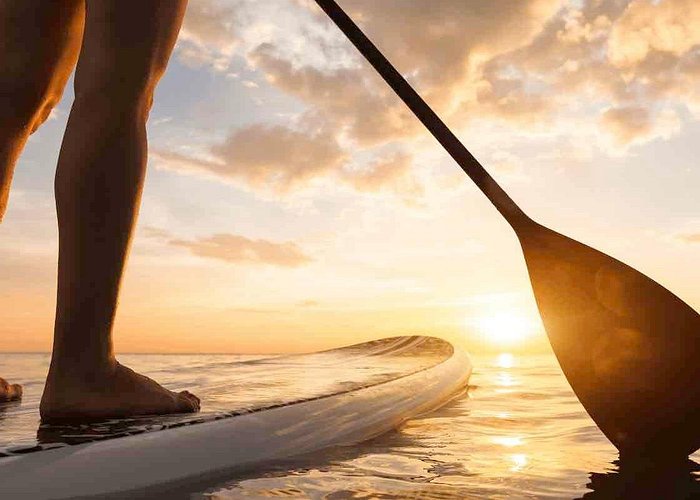
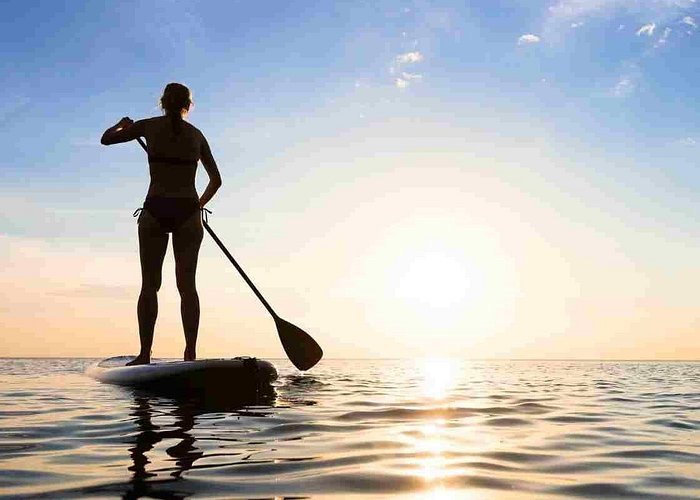
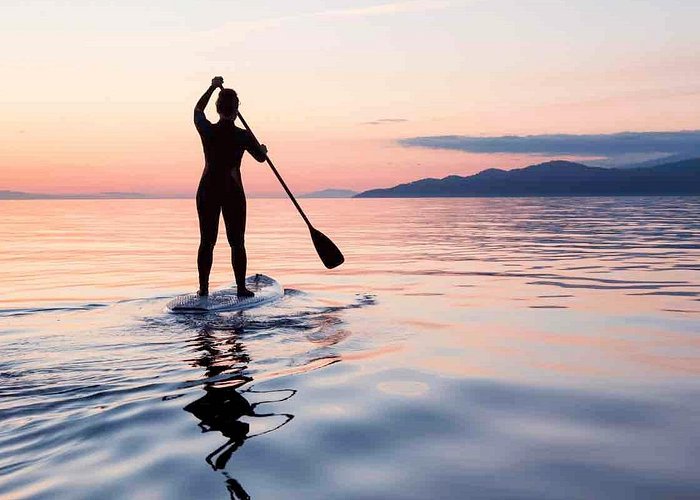
Jervis Bay Beach Stargazing Tour with an Astrophysicist
View on Viator.com Jervis Bay Beach Stargazing Tour with an Astrophysicist
Perfect night out for all ages, date nights, families, groups and locals, this unforgettable tour features Australia’s spectacular night sky away from the city lights. A wonderful opportunity to experience the Southern Sky and its celestial wonders only visible from the Southern hemisphere. The Jervis Bay’s skies are very dark.
Jervis Bay Stargazing (sister of Blue Mountains Stargazing) has proudly won the 2022 and 2023 Bronze awards at NSW Tourism Awards.
A unique experience starting with naked-eye astronomy on Nelsons beach with wave sounds. An opportunity to check if we can see any bioluminescence (glowing waters!) in the sea!
The guide, Dimitri is an Astrophysicist PhD with 10+ years experience including Sydney Observatory, Mt John Observatory, the world-renowned astronomical observatory in Lake Tekapo (New Zealand) and Emirates One & Only Wolgan Valley. He is also a TEDx speaker and a cultural astronomer.
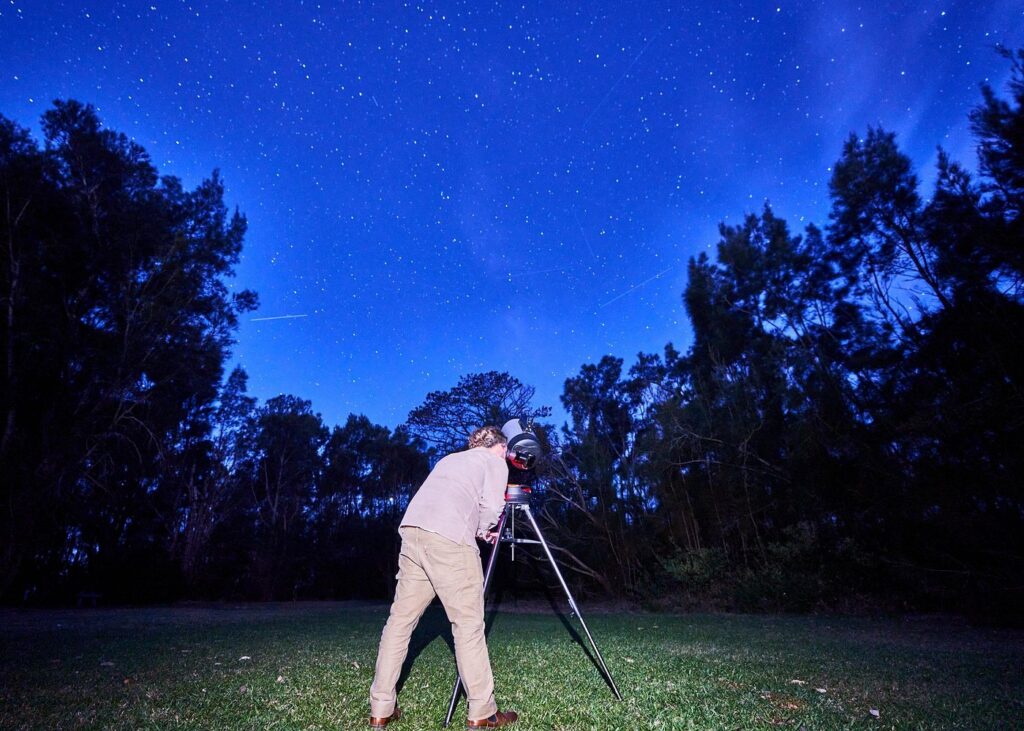

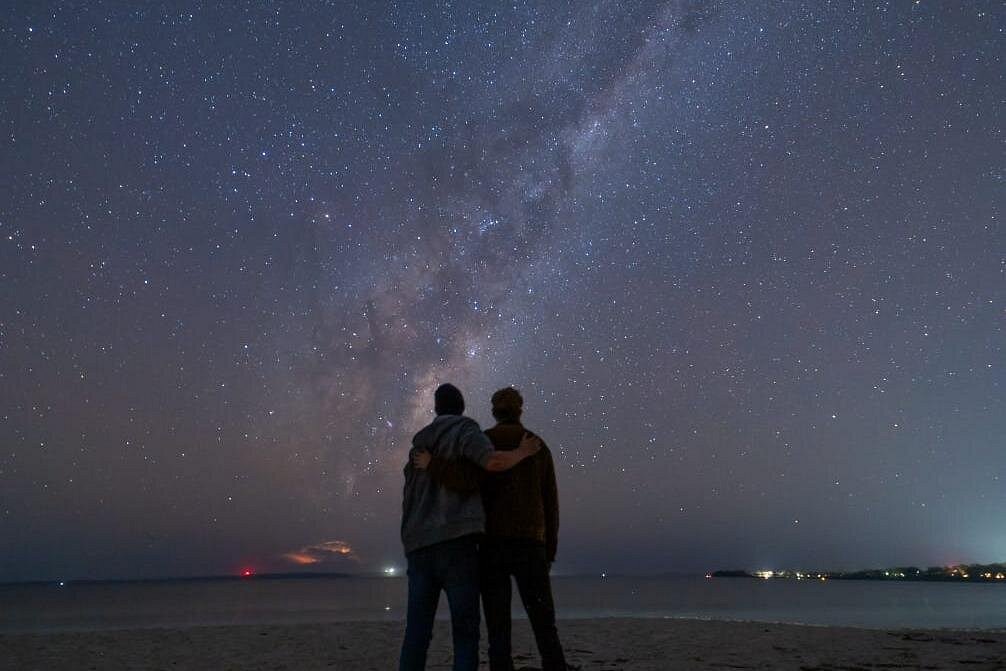
Culburra Beach FAT bike tour
View on Viator.com Culburra Beach FAT bike tour
Get onto your fat-tire bike and take a self-guided ride on Culburra beach, at your own speed and pace. You’ll ride on soft sand and beach tracks, and you have the freedom to stop to take swims, maybe pack a picnic, or go the scenic way and stop at Crookhaven Heads Lighthouse, and when finished spend time at the Burradise Community Gardens, where it finishes.
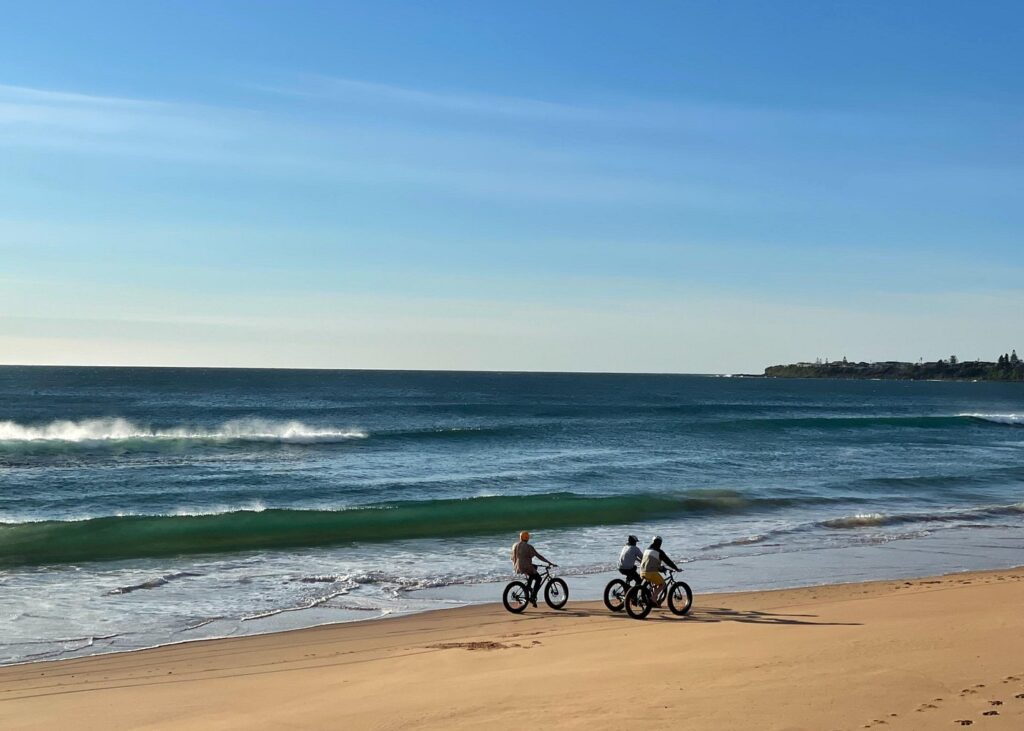

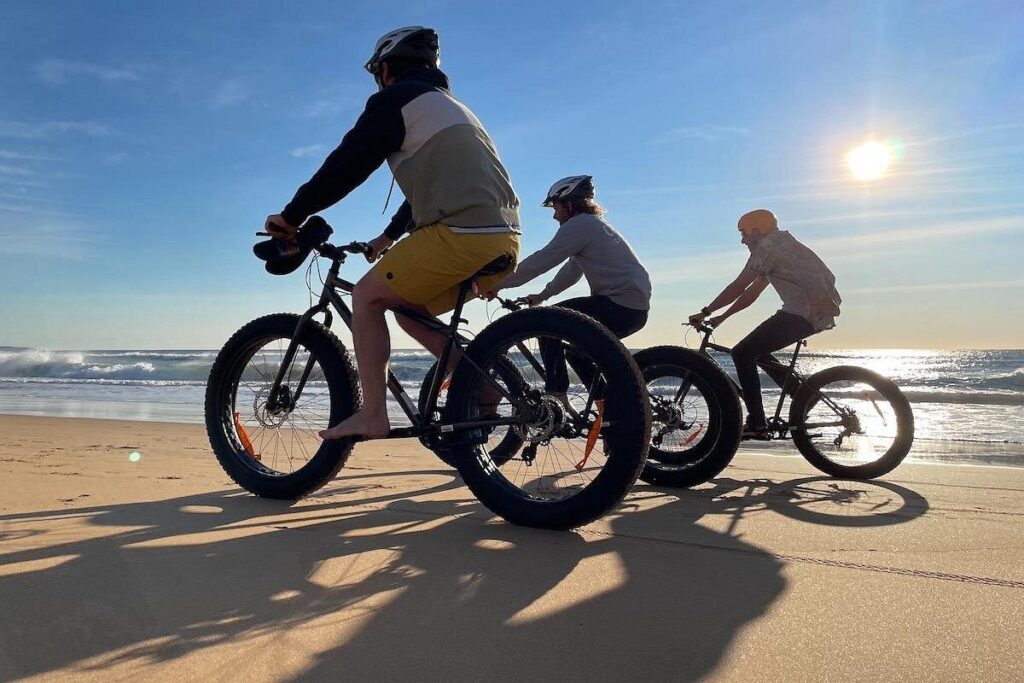
Jervis Bay Hidden Secrets Cruise
View on Viator.com Jervis Bay Hidden Secrets Cruise
Join this group tour to beautiful Jervis Bay on a cruise that will allow you to discover some hidden secrets, and hopefully some dolphins, too. Meet at Huskisson Wharf and board your boat, and then sit back and enjoy the cruise. You’ll have live commentary on board while you pass by the spectacular coastline, including Hyams Beach, Booderee National Park, Murray’s Beach, and more. This tour lasts about an hour and 45 minutes, where you’ll see the beautiful forests and coastline the entire way.

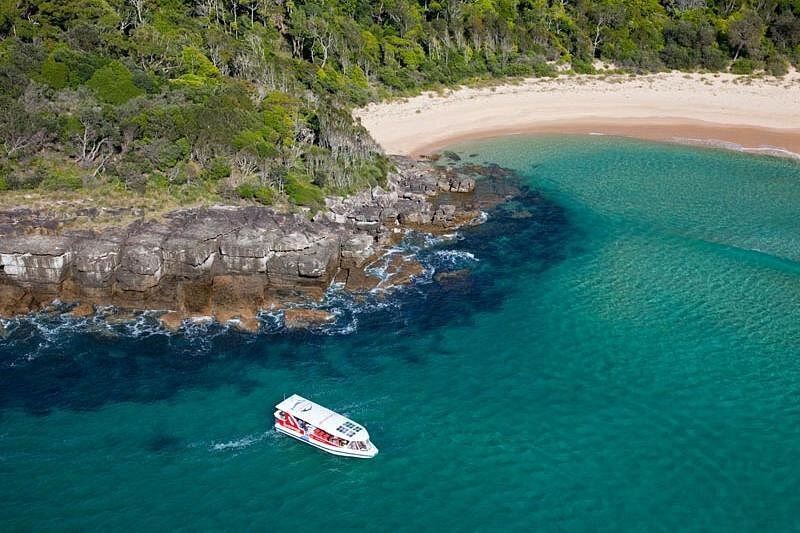
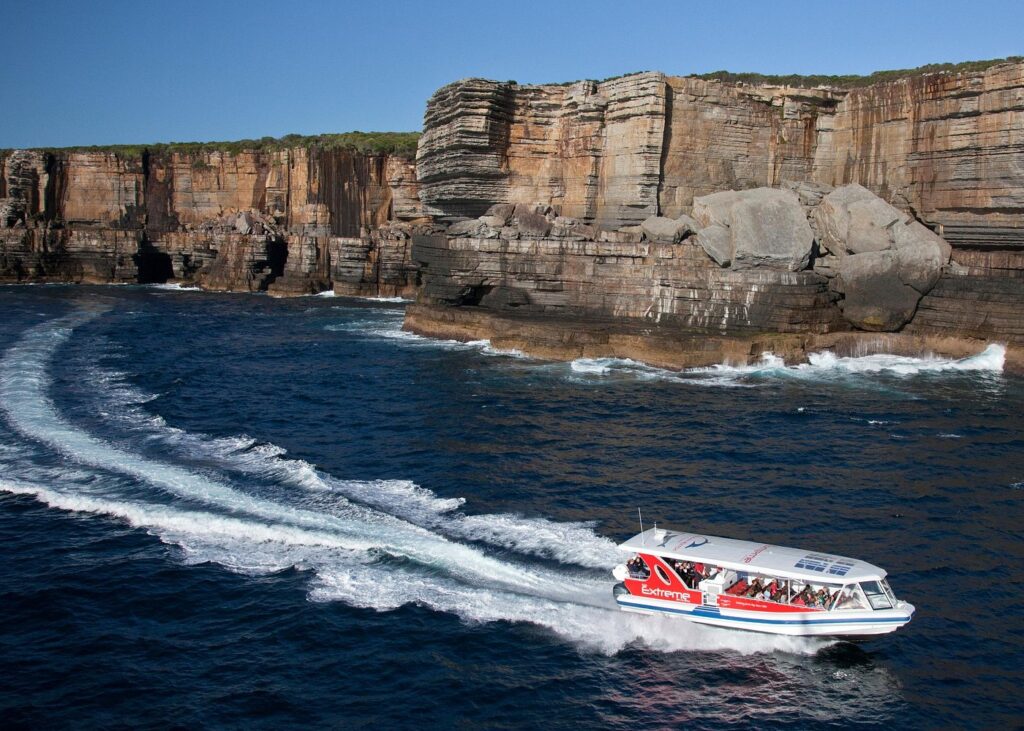
Places To Get Food
- The Deli Cunjurong
- Milton Chinese & Thai Restaurant
- Bendalong Store & Cafe
- Lake Conjola Bowling Club
- Milton Woodfire Pizza
- Island Sushi
- McDonald’s
- The Prickly Pear Restaurant Milton
- NOMAH
- Grey Dolphins Takeaway
- Harvest Milton
Accommodation
These are my picks for accommodation in the area, the links will take you directly to the booking site where I receive a small commission if you book and stay, this does not alter the price as the commission comes out of the price from the booking site. I love travelling and providing information to help others maximize their vacations so by booking through my links you help support me to keep providing this information for free and without ads.
The Beach Penthouse Huskisson
View on Expedia.com.au The Beach Penthouse Huskisson
The contemporary coastal finishes and open plan living can give you the luxury accommodation you deserve on your next getaway. With the beach on its door step the Penthouse delivers spectacular views of the sparkling waters of Jervis Bay from all 3 balconies. Stroll down to the shore or to the main street to take advantage of what Huskisson has to offer.
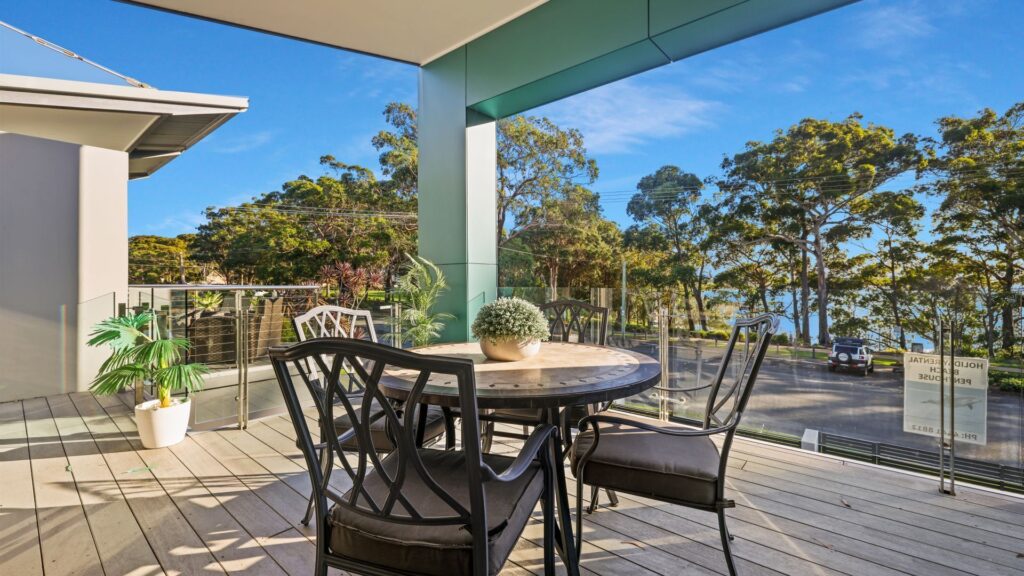

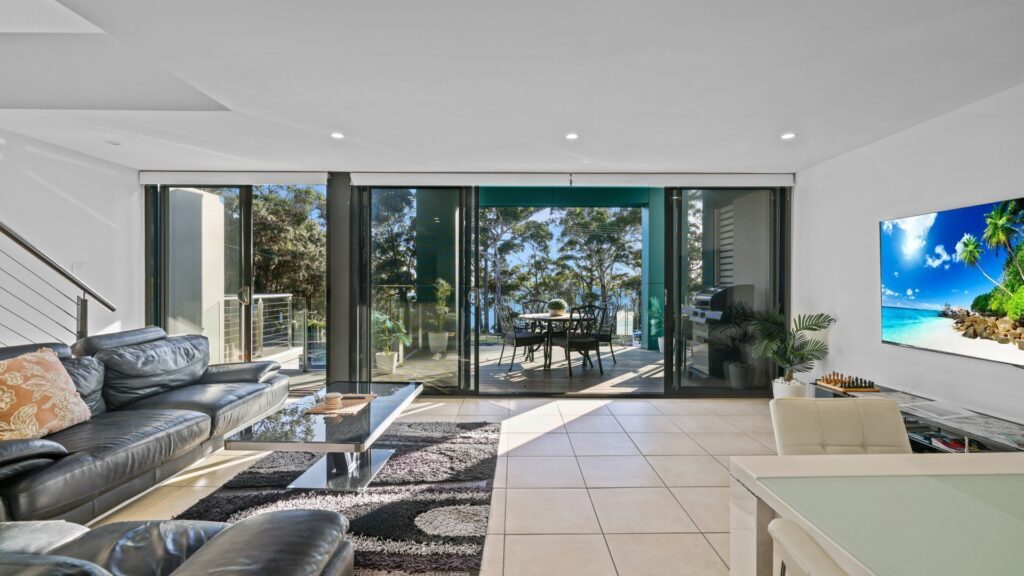
“The Heart of Jervis”
View on Expedia.com.au “The Heart of Jervis”
A short stroll: The pristine waters of Jervis Bay, Main street of Huskisson with all the cafes, restaurants, and the famous Huskisson Pub.


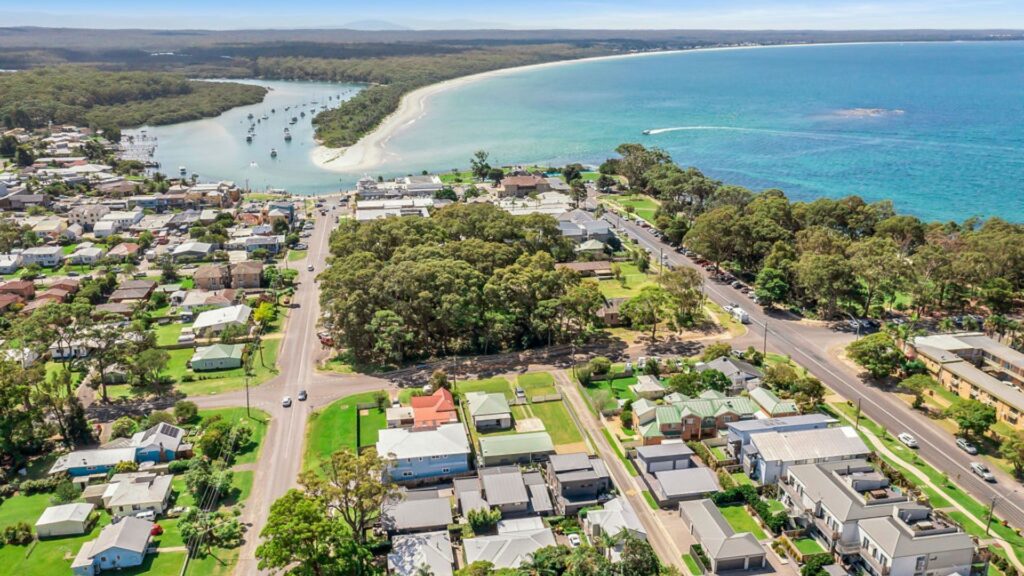
Breeze at the Beach
View on Expedia.com.au Breeze at the Beach
Directly across from Huskisson Beach, one of the most sought-after spots in Huskisson. Close to all the beaches and cafes that Huskisson has to offer. This stylish home offers luxurious interiors and furnishings. With an open plan living, dining and entertaining area this is the perfect accommodation for your next holiday!
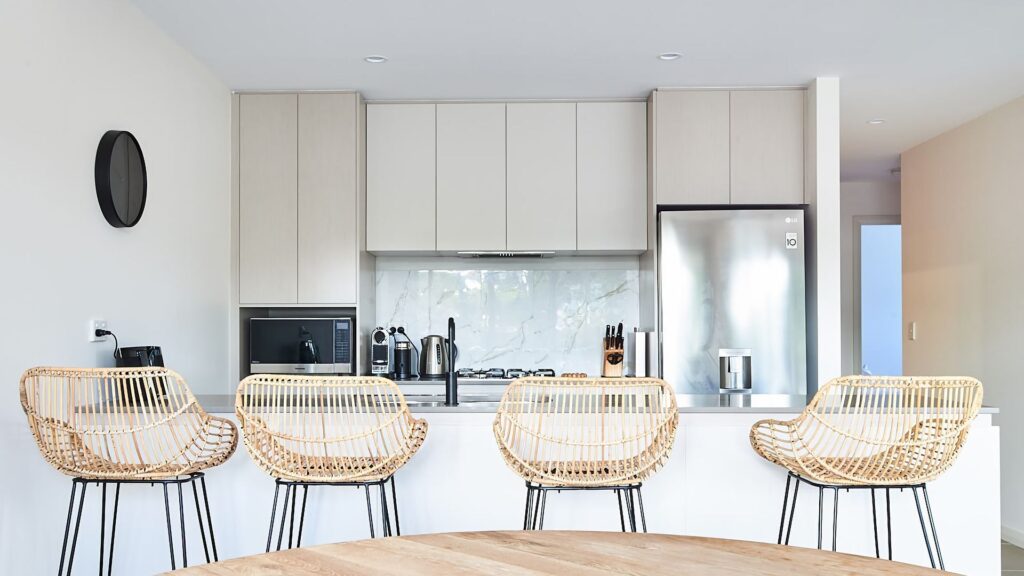
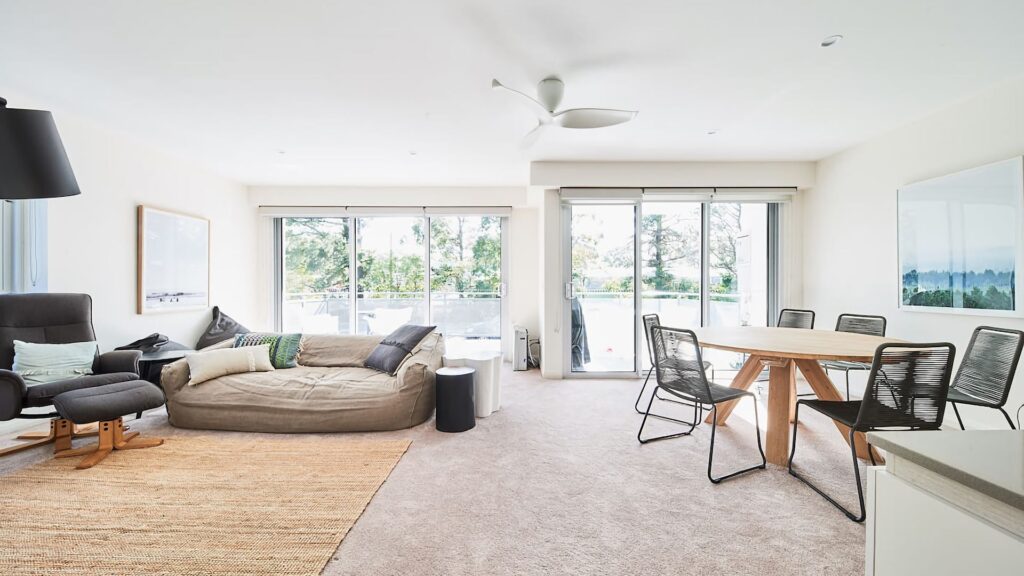

Le Maison at the Beach
View on Expedia.com.au Le Maison at the Beach
This stunning two-bedroom, two-bathroom apartment is ideal as a couples retreat or for small families, with a maximum of four guests, featuring well-equipped kitchen with open plan living and dining.
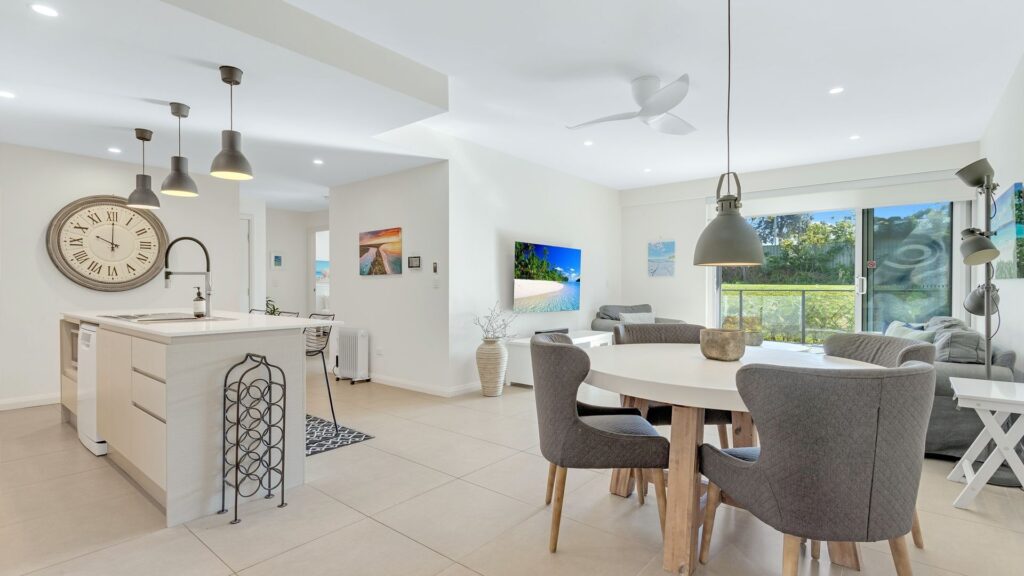
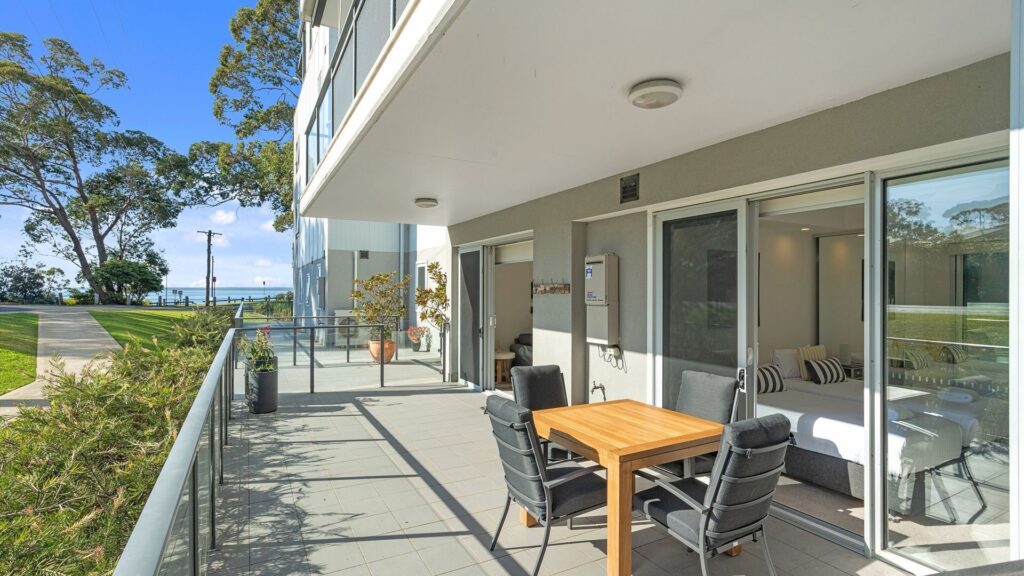

Beachcombers on Collingwood Beach
View on Expedia.com.au Beachcombers on Collingwood Beach
Walking distance to Vincentia’s Collingwood Beach, perfect for swimming, paddle boarding and general frolicking in the crystal-clear water. Vincentia and Huskisson cafes, eateries, and boutiques all a short walk via the direct pathway that takes you directly into Huskisson’s or Vincentia’s centre.
• Collingwood Beach 50m walk
• Moona Moona Creek 8min walk (650m)
• Huskisson Beach 12min walk (1km)
• Orion Beach 5min drive (2.9km)
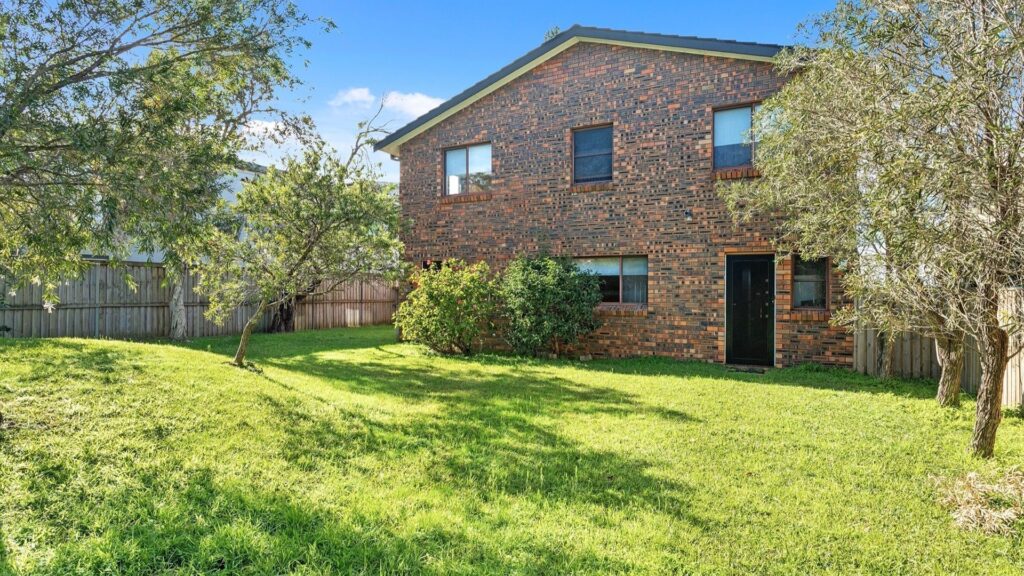
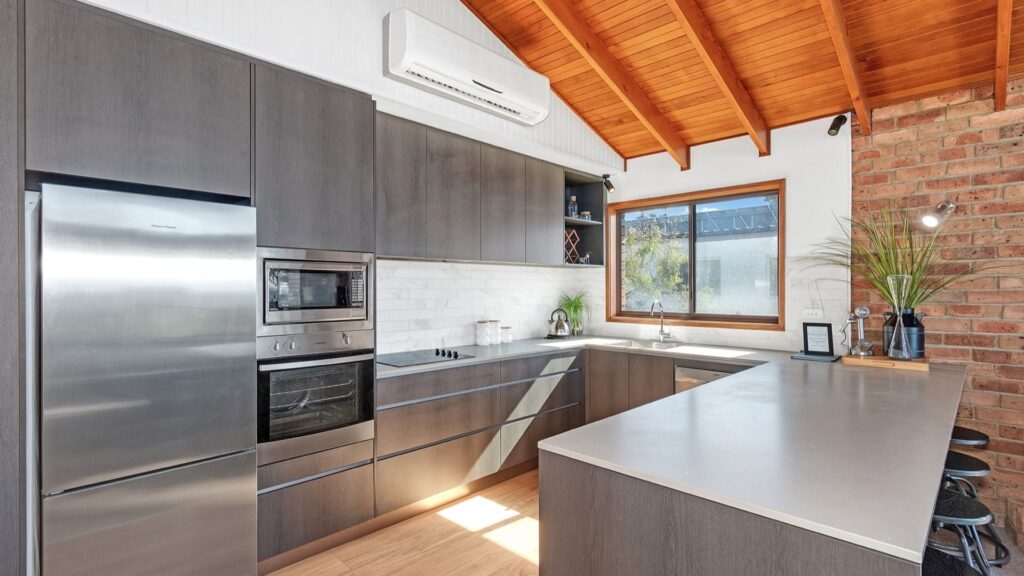

Essential Packing Guide
The links will take you directly to the Amazon site where I receive a small commission if you buy the product, this does not alter the price as the commission comes out of the price from Amazon. I love travelling and providing information to help others maximize their vacations so by buying through my links you help support me to keep providing this information for free and without ads.
Click on this link to see my packing list
Frequently Asked Questions
How do I get to Morton National Park?
Directions and Parking
Head north onto Myra Vale Road, just east of Fitzroy Falls. If you’re coming from Nowra, take the Princes Highway toward the Southern Highlands via Kangaroo Valley. From Wollongong, it’s about an hour’s drive to Fitzroy Falls and Belmore Falls along the Illawarra Highway—then turn south at Robertson onto Belmore Falls Road.
How tall is Granite Falls?
Overview: Granite Falls, located on the NSW South Coast, may not always have a high water flow, yet it impressively cascades over a striking 63-meter sheer granite cliff.
Are dogs allowed in Morton National Park?
Morton National Park features walking trails suitable for all age groups, with durations ranging from 25 minutes to two hours to accommodate various fitness levels. Dogs are welcome on all trails except one. For those seeking a bit more adventure, bikes can be rented from a fully-equipped bike shop nearby.
How big is Morton National Park?
Morton National Park is located in eastern New South Wales, Australia, nestled within the coastal range approximately 100 miles (160 km) south of Sydney. The park covers an area of 404 square miles (1,046 square kilometers).
If you enjoyed this article, you might also find my other writings just as captivating.
FOLLOW ME on Facebook, X, Instagram, Pinterest, Tik Tok, You Tube and Twitter to see more delicious food and get all the latest updates.

 Discover the Beauty of Beowa National Park
Discover the Beauty of Beowa National Park
Leave a Reply